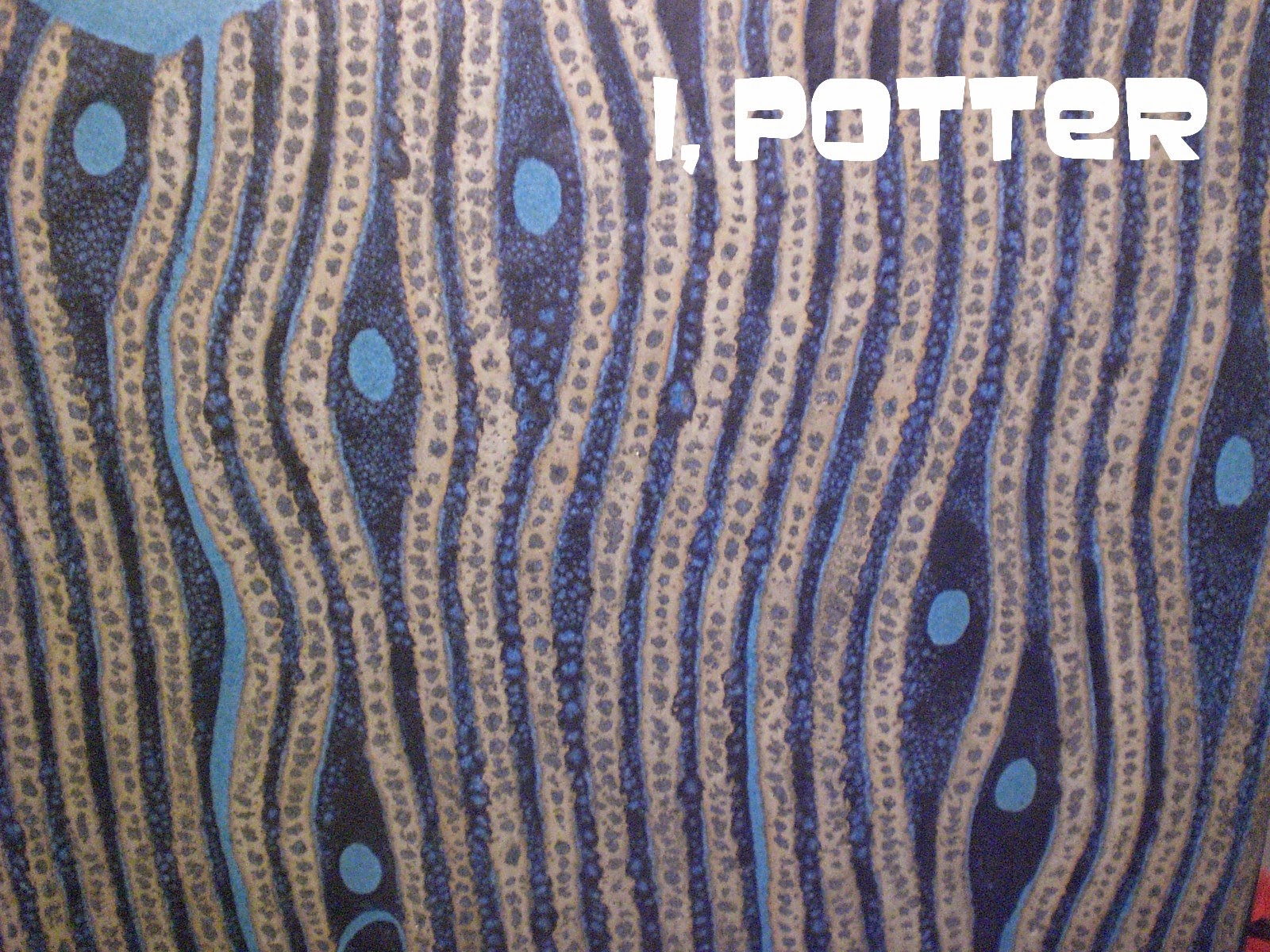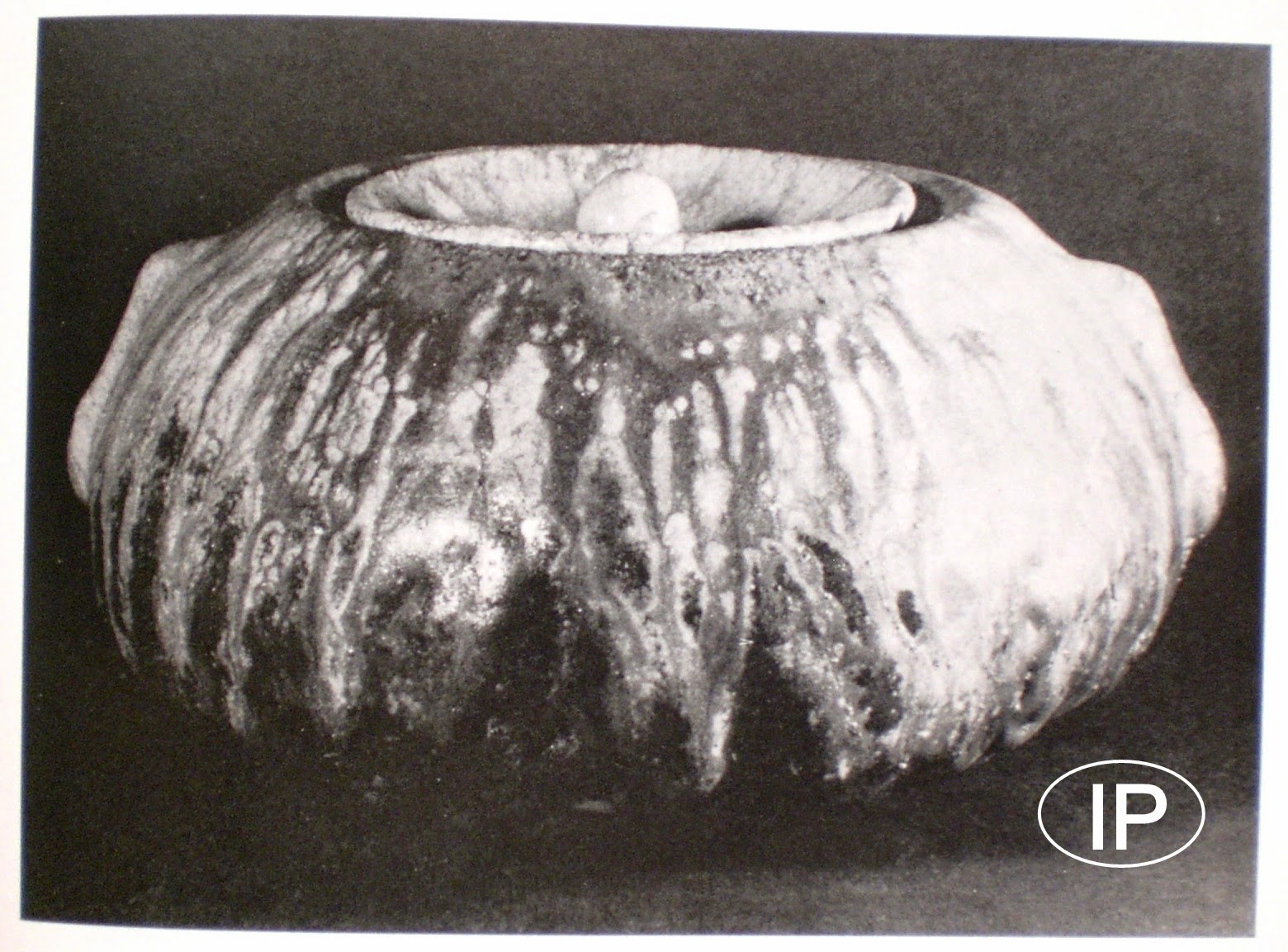
I
recently saw a video from a Japanese TV show where they show a huge chawan made
during the Meiji period, it was about two feet in diameter and it got me
thinking again about volume and scale in relationship to chadogu, but chawan in
particular. Though two feet is just a bit large for a chawan, the o-buri super
sized Hagi chawan of Miwa Kyusetsu XI (Jyusetsu) spring to mind. Mostly made in
last two decades of his life, some of Miwa's chawan are positively huge, what
exactly is the intent? Do these chawan transcends mere function and practicality
to be conceptual vessels or more a statement about chawan than necessarily being
chawan themselves? I have seen a few of these pots in person, beyond the
aspects of function, these pots seem infused with pure masculinity and bravado,
sculpture intended for use and aesthetic appreciation. In a magazine somewhere,
I have a photo of a Kyusetsu chawan on display in the tokonoma, as a basin with
a flower floating in the bowl filled with water and in another book there is a
Oni-Hagi teabowl that measures 21.8cm in diameter where the average chawan
comes in somewhere around 12.5cm. Functional vessel, sculpture or purely an
object for appreciation, I wonder if he didn't make them like this, simply
because he wanted to and he could.
As
I continue to contemplate size, scale
and volume, besides Miwa Kyusetsu, both Tsukigata Nahiko and Kumano Kuroemon
come to mind. For Tsukigata, the "bushi" (Samurai warrior) ideal
would seem to be part of his motivation for creating such large and powerful
chawan, but for Kumano, I have often suspected that his large chawan are
created at such a scale simply to match the ferocity and intensity of the
firing process where the pots and potter are pushed to the brink. As I survey
his large chawan I can get caught up in fantasy and imagine such bowls in use
by the likes of a Sumo Yokozuna (grand champion) or the Ogre of Mt. Oe
(Shuten-Doji) should either partake of tea. Illustrated is a large Kuma-Shino
chawan by Kumano Kuroemon. I took the picture with me holding the bowl for
scale, I am 6'2" and wear and X-L glove for perspective and this bowl measures
in at just over 16.5cm, I think the size of the pot is apparent. Though I have
heard Kumano's works described as grotesque (in form and scale) by some, to me
there is a brutal, honest beauty to these pots. Their stories and encounters
with unheard of temperatures and firings are permanently fused within their
surfaces and forms. There are few potters who decide to work at this scale and
even fewer who can pull it off but Kumano alone has become synonymous with
chawan (and spirit) that are larger than life.




































